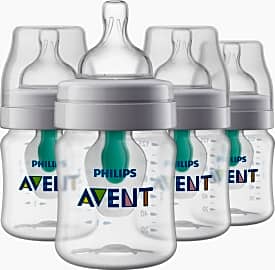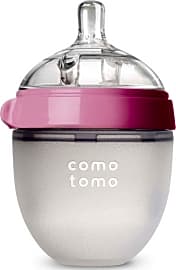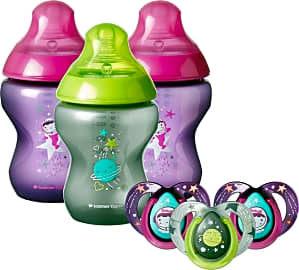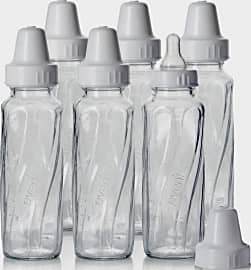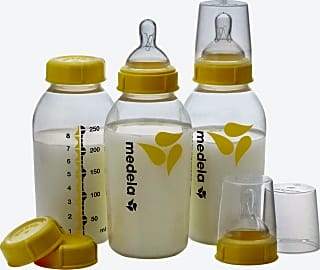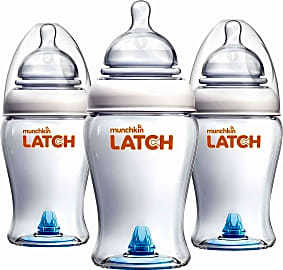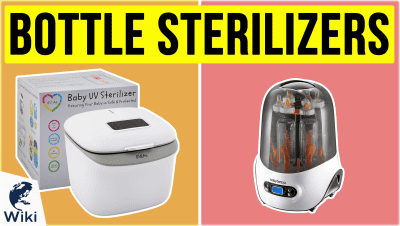The 10 Best BPA Free Baby Bottles

This wiki has been updated 33 times since it was first published in December of 2016. Not all baby bottles are created equal. Although it is now almost standard for them to be manufactured without BPA – a substance that can leak into food and poses alarming threats to an infant's health — it requires a lot for one to be considered among the best these days. Ideal models come with soft nipples, are easy to clean, and have ergonomic designs to make the feeding process simpler. When users buy our independently chosen editorial choices, we may earn commissions to help fund the Wiki.
Editor's Notes
March 29, 2019:
Making sure a baby receives enough nutrients is a challenge new parents face several times a day. Between struggling to get their little one to latch on, to stopping to burp gassy cuties, feeding babies is much harder than it looks, so we made sure many of our bottles have features to make it a little easier. The Playtex VentAire is already angled to make upright feeding easier, without having to constantly re-position the bottle. The Philips Avent Anti-colic has a unique air-free vent that locks milk — and never bubbles — into the nipple, so the tip remains full of liquid as long as the baby is sucking. When it comes to getting a comfortable grip on the bottle, both for baby and parent, the Philips Avent Natural is an excellent choice with its ergonomic shape and compact size. The Comotomo Natural Feel will also help your cutie get a handhold so to speak, since its silicone material has a naturally grippy texture. We know some homes want to minimize the use of plastic, which is why we also included some glass models, like the Evenflo Feeding Classic and Lifefactory 110011. Since they're made of glass, that also means they withstand high temperatures fairly well.
BPA: Is It Really Dangerous?
Not only that, but the outcry against the chemical has caused many companies to move away from it, and BPA-free options are becoming increasingly common in the food industry.
It seems like every few years they warn us about a new danger to scare parents of young children. One year it's suffocation risks in cribs, the next year it's skull fractures in sling carriers, and the year after that it's being eaten by bears (OK, so maybe that last one has always been a known risk).
So, you'd be forgiven if you just rolled your eyes when you heard about the furor over BPA in baby bottles.
BPA, or Bisphenol A, is a chemical that's used as a liner in many food and beverage containers, preventing leaks and keeping the material inside safe from contaminants.
There's just one problem with it: it has a nasty tendency to build up in our bloodstream.
It's estimated that more than 90 percent of people today have traces of BPA in their bodies, and it's nearly impossible to get away from the stuff. In addition to ingesting it when you eat foods that have been packaged in plastic, you can also breathe it in, thanks to the fact that factories and water treatment facilities release it into the air.
Now that you know that it's virtually impossible to get away from it, what does it do to your body?
Well, technically, the answer is, "We don't know." There haven't been many studies performed documenting its effects on people, and the FDA swears up and down that it's safe. However, in animal testing, it's been shown to affect the brain, alter hormone levels, and even cause cancer. Worse, it seems that children are more susceptible to its effects than adults.
One of the primary concerns is its ability to mimic the hormone estrogen. This can mean that girls who are exposed to it can develop abnormalities in their reproductive organs as well as enter puberty early, and boys can encounter enlarged prostates, reduced sperm production, and diminished testosterone levels.
BPA can affect the environment, as well. It's estimated that we release over 1 million pounds of the chemical into the world every year, as it can leach into our water supply when rains hit landfills, among other things. Beyond getting in our systems, it can also affect the health of freshwater fish and amphibians by damaging their endocrine systems.
Now that we've sufficiently scared you, we should remind you that, while BPA's effects on animals are well-documented, there's little reliable data showing that it behaves similarly in humans. Not only that, but the outcry against the chemical has caused many companies to move away from it, and BPA-free options are becoming increasingly common in the food industry.
So, while the sky might not be falling, it's probably worth your while to avoid BPA as much as possible — and to limit your child's exposure. The worst thing about it is that you can't even protect them by putting them in a plastic bubble.
How To Care For Your Baby Bottles
If you're going out of your way to buy BPA-free baby bottles, then you clearly care about what your child is putting into her body. It makes no sense to stop there, then — don't you want to make sure those bottles are clean as can be?
What you should be worrying about is whether you'll get to sleep again before next Tuesday.
The first thing you should realize is that most baby bottles are dishwasher-safe (check the packaging to make sure), and most dishwashers get hot enough to thoroughly sanitize anything put inside them. Just make sure that the bottles are dry before you put them away.
However, if you want to be really sure that those bottles have been sanitized, you can boil them or invest in a bottle sterilizer. Taking these extra precautions is especially important during the first three months, or if your baby was premature or has a compromised immune system.
The other good thing about a sterilizer is that it gives you a built-in place to store your bottles. This can be preferable to keeping them in a dusty cabinet, but as long as you dry them thoroughly before putting them in whatever storage you use, you should be fine.
Taking care of baby bottles is one of the easier things about being a new parent, so don't worry about it too much. What you should be worrying about is whether you'll get to sleep again before next Tuesday.
Other Hidden Dangers To Be Aware Of
When you're a new parent, the most terrifying thing in the whole world is...everything, really. It seems like danger lurks behind every corner, and you wonder how anyone ever survived infancy.
Cheer up — it's not quite that bad. However, there are some things that you should definitely keep an eye on.
However, there are some things that you should definitely keep an eye on.
By far the biggest area of concern is the crib. After all, when everyone's asleep, that means no one's watching him. Resist the temptation to swaddle him in a ton of blankets, though, as that can lead to suffocation. To reduce the risk of SIDS, lay him on his back on a firm mattress.
The bath should be your next area of concern. Be sure to check the water beforehand so that you don't scald him accidentally. Also, a bath seat may seem like a nifty safety device — but that's only if you're paying attention. That's the cardinal rule of bath time, even if you use a tub made specifically for infants.
Don't overlook the changing table, either. It's easy to get distracted for a second, and that's all the time it takes for him to roll off the edge. Make sure you get a table with straps, or change your baby on a blanket on the floor.
There are obviously more dangers than we can address here, but these are the primary areas in which many infant injuries occur. If you can take the risk out of these situations, you'll be well on your way to keeping your baby safe (seriously, though, watch out for bears).



